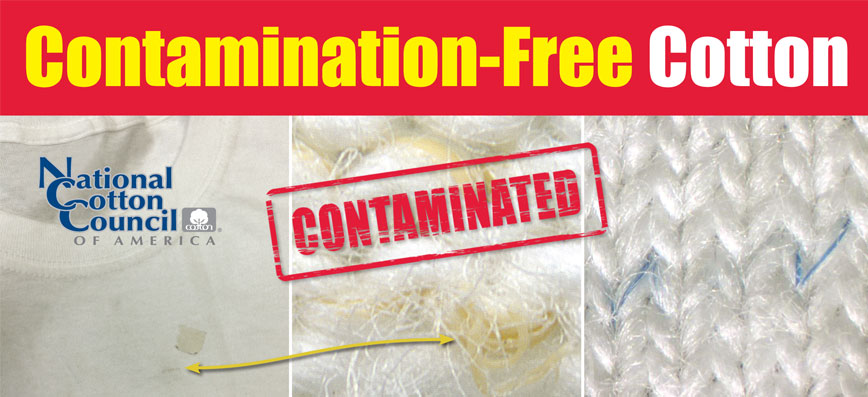By Derek Whitelock
USDA-ARS
U.S. cotton is considered to have some of the lowest levels of contamination in the world. However, that reputation is in jeopardy as complaints of contamination from domestic and foreign mills are on the rise.
Of particular concern for the United States is plastic trash that collects in cotton fields, black plastic film used as mulch, plastic twine typically used for hay baling, and plastic film used for round module wrap.
Education And Research Efforts
So, what is the cotton industry doing to keep plastic contamination out of U.S. cotton?
The answer has two parts: education and research.
First, there is a nationwide campaign led by the National Cotton Council to educate the industry about plastic contamination and how to prevent it. Second, Cotton Incorporated supports collaborative research efforts at the U.S. Department of Agriculture ginning laboratories in Texas, New Mexico and Mississippi; the USDA Cotton Structure and Quality lab in New Orleans; and at Texas A&M University, Oklahoma State University and the University of North Texas.
These efforts focus on detection using imaging/optical techniques and separation using physical/electrostatic methods. The Cotton Foundation also has requested proposals and will be assisting with future research.
Contaminants In The Field And Gin
The best way to keep plastics out of U.S. cotton is to prevent them from entering the cotton stream in the first place. One research project is investigating harvester-mounted cameras to detect contamination in the field and warn the operator before it enters the harvester and ends up in the module.
Another research effort gearing up next year will look at using unmanned aerial vehicles or drones mounted with cameras to fly over the cotton field and detect and record the location of contaminants. These coordinates can then be transmitted to the cotton producer’s smartphone and located manually, or an autonomous land vehicle can be dispatched to retrieve the plastics before harvesting.
Research efforts on detection methods at the gin also are underway. A color camera system is being developed to view the backside of the module feeder cylinders to detect plastics wrapped on the spikes or pieces of plastic that slip through.
For contaminants that make their way into gin machinery, a prototype system is being tested and refined. It detects colored contaminants in seed cotton in places where the flow is slower and more spread out, such as in rectangular ducts between cylinder cleaners and stick machines. For neutral colored or transparent plastics, researchers are investigating infrared detectors and light sources that sense differences in chemical composition rather than color.
Extracting Contaminants
Assuming these detection methods are successful, what can be done to extract plastic contaminants from the cotton? Previous research shows that with current gin machinery, about 17 percent of plastics that enter the gin end up in the bale. Research is underway to modify this machinery to more effectively remove contaminants.
In addition, extraction methods using jets of air to fluff the cotton and float lighter contaminants away are under investigation. Another innovative concept exploits the differences in the static electric charge that cotton and plastics acquire to develop a “plastic magnet.”
These differences cause plastics and cotton to be attracted to opposite charges when exposed to a high voltage electric field. It is anticipated this behavior can be used to encourage the lighter plastics to move away from the seed cotton.
These projects are all in different levels of development. Whatever the development phase, researchers and scientists working on these concepts at USDA facilities and the universities are committed to helping the U.S. cotton industry find solutions to the current cotton contamination problem.


